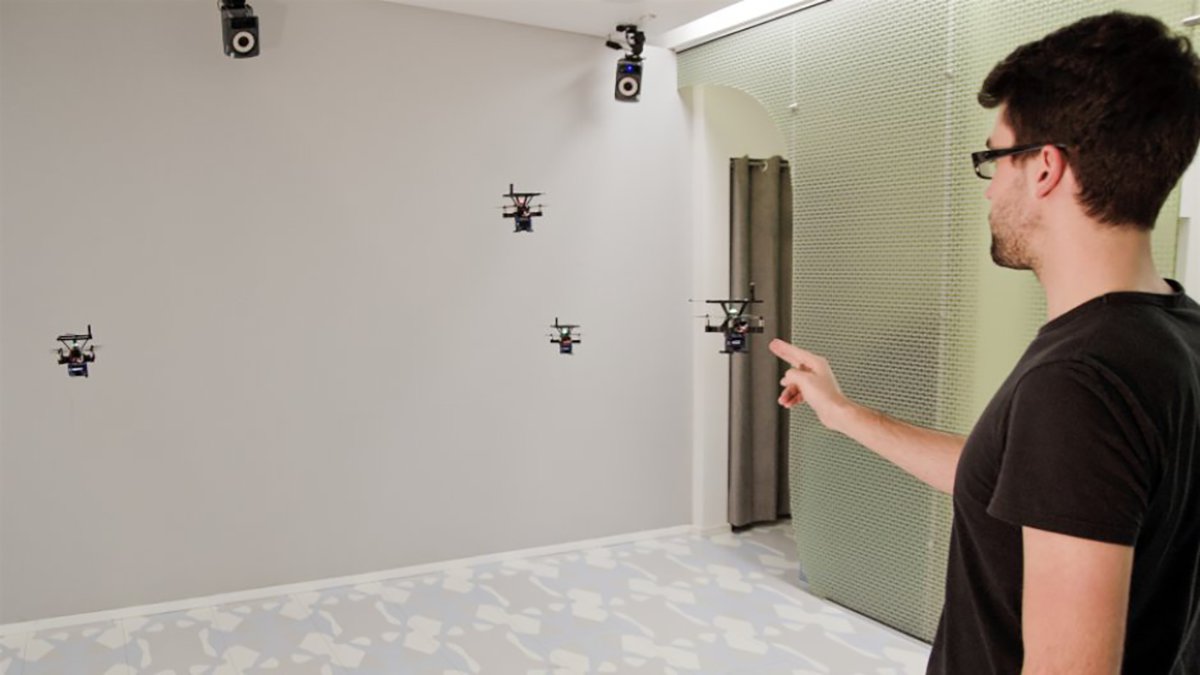Flying pixels create self-levitating displays
Is it a bird? Is it a plane? No! It's a voxel!

A team of researchers at Queen's University's Human Media Lab have unveiled a system of flying 'BitDrones' that let users explore virtual information by interacting with levitating voxels.
Roel Vertegaal and his students, who created the technology, say that it's the first step towards creating interactive, self-levitating objects that can change their shape in a programmable way, using swarms of small quadcopters. "BitDrones brings flying programmable matter closer to reality," said Vertegaal. "It is a first step towards allowing people to interact with virtual 3D objects as real physical objects."
Right now, the system consists of three types of drone. "PixelDrones" are equipped with an LED and a small dot-matrix display. "ShapeDrones" have a lightweight mesh and 3D printed frame, and serve as building blocks for 3D models. Finally, "DisplayDrones" have a high-resolution touchscreen and forward-facing video camera, powered by an Android smartphone. All three have reflective markers, letting their positions be tracked in real-time with motion capture technology.
'You can actually touch these pixels'
"We call this a Real Reality interface rather than a Virtual Reality interface," says Vertegaal. "This is what distinguishes it from technologies such as Microsoft HoloLens and the Oculus Rift: you can actually touch these pixels, and see them without a headset."
Right now, the system consists of dozens of drones sized between 5 and 10 centimetres, but the team is working to scale that up to thousands of drones less than a centimetre in size. Eventually, Vertegaal hopes, such a system could let us navigate digital systems, recreate digital 3D objects in the real world, and even allow for telepresence applications where the movements of someone's head are tracked and replicated to allow someone to remotely inspect a location.
You can see the BitDrones in action in the video below.
Huge lasers are helping us learn why some stars fail to ignite
Sign up for breaking news, reviews, opinion, top tech deals, and more.
